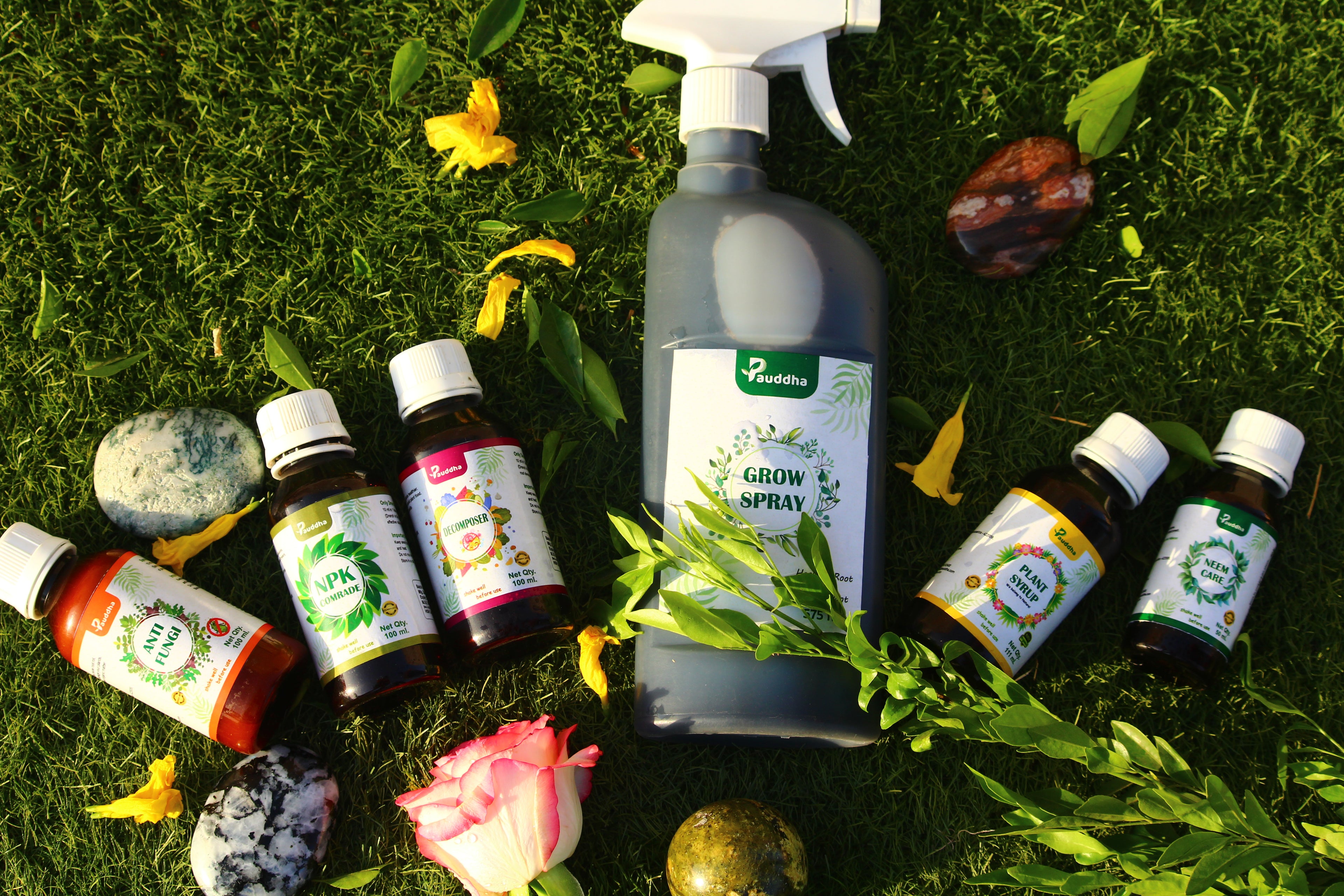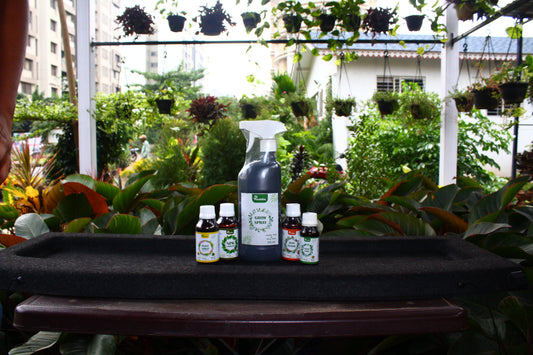Solve More, Stress Less - Use Different Combos
Why Choose Pauddha Combos?
Plants aren’t puzzles with isolated problems. Weak roots lead to nutrient-starved leaves, while dusty foliage slows photosynthesis. Combos address these connections by pairing solutions that work together. For example:
- Plant Spray + NPK Leaf Pack
- Leaf Spray + NPK Boost
- Plant Spray + Leaf Spray
The Plant Spray + NPK Leaf Pack merges immediate care with long-term nutrition. The plant spray cleans leaves and protects against pests, while the NPK pack enriches soil with nitrogen, phosphorus, and potassium for steady root-to-leaf nutrient flow.
The Leaf Spray + NPK Boost focuses on foliage and soil synergy. The leaf spray adds micronutrients like iron and magnesium for chlorophyll production, while the NPK boost feeds roots, ensuring leaves stay vibrant and photosynthesis runs smoothly.
For daily maintenance, the Plant Spray + Leaf Spray combo tackles dust, pests, and nutrient gaps in one step. The plant spray strengthens roots and soil health, while the leaf spray delivers nutrients directly to foliage for faster absorption.
Root Development Tips for New Plant Parents
Roots are the lifeline of your plant, anchoring it to the soil and absorbing water and nutrients. However, compacted soil, poor drainage, or weak root systems can starve plants of oxygen and nutrients, leading to stunted growth, yellow leaves, or root rot.
To fix these issues, focus on three key steps:
- Humic Acid: This natural compound strengthens root cell walls, improves nutrient absorption, and helps roots grow thicker and deeper. It also binds to nutrients in the soil, making them easier for plants to access.
- Soil Aeration: Compacted soil suffocates roots. Adding coconut coir, perlite, or compost creates air pockets, allowing roots to breathe and spread freely.
- Microbe Support: Beneficial bacteria and fungi break down organic matter into nutrients like phosphorus and nitrogen, which roots absorb. They also protect against harmful pathogens.
Ideal for:
- Repotting: Refresh tired soil and prevent root-bound plants.
- Transplant Shock: Help roots recover faster after moving to a new pot.
- Stressed Plants: Revive plants showing slow growth or yellowing leaves.
Leaf Development & Photosynthesis
Leaves are your plant’s solar panels, converting sunlight into energy through photosynthesis. However, dust buildup, pest damage, or nutrient gaps can block light absorption and slow growth. For optimal leaf health, focus on three priorities:
1. Dust-Free Surfaces
Dust acts like a sunscreen, blocking up to 30% of sunlight from reaching leaf cells. Clean leaves with a soft cloth or gentle spray weekly. This simple step boosts photosynthesis, helping plants produce more energy for growth and blooms.
2. Magnesium Boost
Magnesium is the core atom in chlorophyll, the molecule that captures sunlight. Without it, leaves turn pale or yellow (chlorosis). Add magnesium through foliar sprays or soil amendments like Epsom salt to keep chlorophyll levels high and foliage vibrant green.
3. Direct Nutrient Delivery
Foliar sprays bypass sluggish roots, delivering nitrogen (N), phosphorus (P), and potassium (K) directly to leaves. This is especially useful for:
- Quick fixes: Addressing sudden nutrient deficiencies.
- Weak roots: Plants recovering from rot or transplant shock.
- Fast-growing greens: Herbs or veggies needing instant nourishment.
Result: Healthier leaves absorb more light, produce more energy, and resist pests naturally.
Plant Nutrients & Soil Health – The Balanced Diet
Plants, like humans, thrive on a balanced diet. Macronutrients—nitrogen (N), phosphorus (P), and potassium (K)—are needed in large quantities for growth, flowering, and root development. Micronutrients like iron, zinc, and magnesium are equally vital, preventing yellow leaves, stunted roots, and poor fruiting. A two-step approach ensures your plants get everything they need:
Step 1: Slow-Release Fertilizers
These feed soil gradually, releasing nutrients over weeks or months. Benefits include:
- No Nutrient Burn: Avoids root damage from sudden chemical surges.
- Steady Growth: Supports consistent leaf, flower, and root development.
- Soil Health: Organic options (e.g., compost pellets) enrich soil with microbes.
Step 2: Micronutrient Sprays
Even with good soil, plants can lack specific nutrients due to pH imbalances or poor absorption. Foliar sprays deliver iron, zinc, or magnesium directly to leaves, bypassing soil issues. Use them for:
- Quick Fixes: Revive yellowing leaves in days.
- Preventive Care: Boost resilience during flowering or fruiting.






